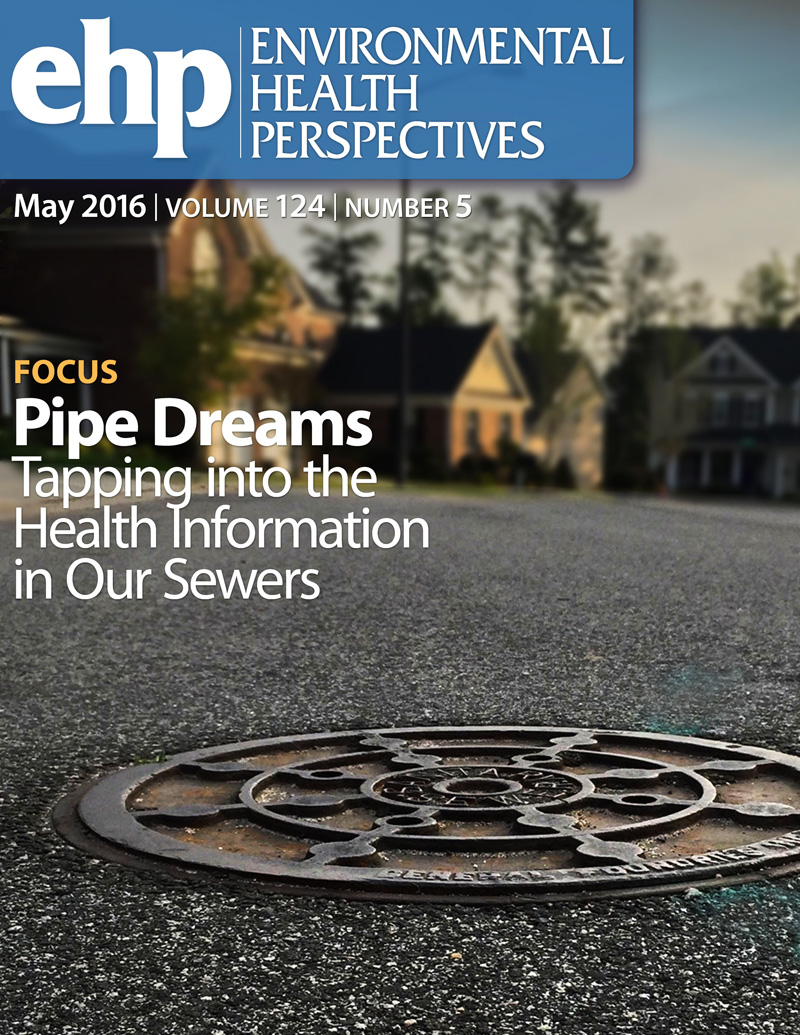用斑马鱼和小鼠颗粒细胞系评价Neburon暴露对卵巢卵泡发生的影响。
IF 9.8
1区 环境科学与生态学
Q1 ENVIRONMENTAL SCIENCES
引用次数: 0
摘要
卵泡发生对女性生殖至关重要。这可能受到各种因素的破坏,包括具有芳烃受体(AHR)激动活性的污染物,但潜在的机制尚不清楚。目的利用除草剂neburon(一种中度AHR激动剂),研究其在环境相关浓度下对斑马鱼卵巢卵泡发生的影响,探讨其作用机制。方法将野生型(WT)和3种不同基因型(amh+/-、bmpr2a+/+、amh+/+、bmpr2a+/+、bmpr2a+/-、amh+/-、bmpr2a+/-)雌性斑马鱼暴露于neburon环境150 d。采用液相色谱-质谱联用技术(LC-MS/MS)对鱼体内的Neburon及其代谢物进行定量分析。采用H&E和TUNEL染色评估卵巢病理。通过转录组分析确定差异表达途径,随后使用RT-qPCR, WB, IHC和ELISA进行验证。最后通过AHR拮抗剂、ChIP-RT-qPCR等方法进一步阐明其在小鼠颗粒细胞系(KK1)中的作用机制。结果neburon暴露后,只检测到neburon的4种代谢物,而未检测到neburon本身,且这些代谢物均具有AHR激动活性,表明neburon的毒性持续存在。Neburon暴露改变了WT斑马鱼的卵泡期分布和卵母细胞质量。进一步实验发现,neburon暴露诱导抗苗勒管激素(Amh)分泌增加,Amh/Bmpr2a通路基因表达增加,卵泡发育加速,胰岛素样生长因子表达降低,这与卵母细胞闭锁有关。值得注意的是,amh+/-;bmpr2a+/-斑马鱼在这些neburon相关的结果中显示出一种获救的表型。此外,在KK1细胞中,AHR表现出与Amh启动子的特异性结合,neburon处理增强了它们的相互作用。在斑马鱼中,AMH被确定为neburon暴露后生殖障碍的关键靶点。尽管目前使用的农药半衰期较短,但其代谢物仍可能具有显著的毒理学风险。本研究为一种AHR激动性污染物如何影响雌性斑马鱼的繁殖提供了新的见解。https://doi.org/10.1289/EHP15372。本文章由计算机程序翻译,如有差异,请以英文原文为准。
Evaluating the Effects of Neburon Exposure on Ovarian Folliculogenesis Using Zebrafish and Mouse Granulosa Cell Line.
BACKGROUND
Ovarian folliculogenesis is crucial for female reproduction. This can be disrupted by various factors, including pollutants with aryl hydrocarbon receptor (AHR) agonistic activity, but the underlying mechanisms remain unclear.
OBJECTIVES
Using the herbicide neburon, a moderate AHR agonist among current pesticides, we investigated its effects on ovarian folliculogenesis in zebrafish through life-cycle exposure at environmentally relevant concentrations to elucidate the associated mechanisms.
METHODS
Wild-type (WT) and three different genotypes of female zebrafish (amh+/-;bmpr2a+/+, amh+/+;bmpr2a+/-, amh+/-;bmpr2a+/-) were exposed to neburon for 150 days. Neburon and its metabolites in fish were quantified using LC-MS/MS. Ovarian pathology was assessed by H&E and TUNEL staining. The differentially expressed pathways were identified by transcriptome analysis, followed by validation using RT-qPCR, WB, IHC, and ELISA. Finally, AHR antagonist, ChIP-RT-qPCR, and other methods were used to further elucidate the mechanism in mouse granulosa cell line (KK1).
RESULTS
After neburon exposure, only four metabolites of neburon were detected but not itself, and all these metabolites had AHR agonistic activity, indicating the persistent toxicity of neburon. Neburon exposure altered follicle-stage distribution and poorer oocyte quality in WT zebrafish. Further experiments found that neburon exposure induced greater secretion of anti-Mullerian hormone (Amh), greater expression of genes in the Amh/Bmpr2a pathway, accelerated follicular development, and lower expression of insulin-like growth factors, which was associated with oocyte atresia. Notably, amh+/-;bmpr2a+/- zebrafish showed a rescued phenotype with regard to these neburon-associated outcomes. Moreover, AHR exhibited specific binding to the Amh promoter in KK1 cells, and neburon treatment enhanced their interaction.
DISCUSSION
In zebrafish, AMH was identified as a critical target for reproductive disorders following neburon exposure. Despite the short half-lives of currently used pesticides, their metabolites might still have significant toxicological risks. This study provides a novel insight into how one AHR agonistic pollutant affects female zebrafish reproduction. https://doi.org/10.1289/EHP15372.
求助全文
通过发布文献求助,成功后即可免费获取论文全文。
去求助
来源期刊

Environmental Health Perspectives
环境科学-公共卫生、环境卫生与职业卫生
CiteScore
14.40
自引率
2.90%
发文量
388
审稿时长
6 months
期刊介绍:
Environmental Health Perspectives (EHP) is a monthly peer-reviewed journal supported by the National Institute of Environmental Health Sciences, part of the National Institutes of Health under the U.S. Department of Health and Human Services. Its mission is to facilitate discussions on the connections between the environment and human health by publishing top-notch research and news. EHP ranks third in Public, Environmental, and Occupational Health, fourth in Toxicology, and fifth in Environmental Sciences.
 求助内容:
求助内容: 应助结果提醒方式:
应助结果提醒方式:


